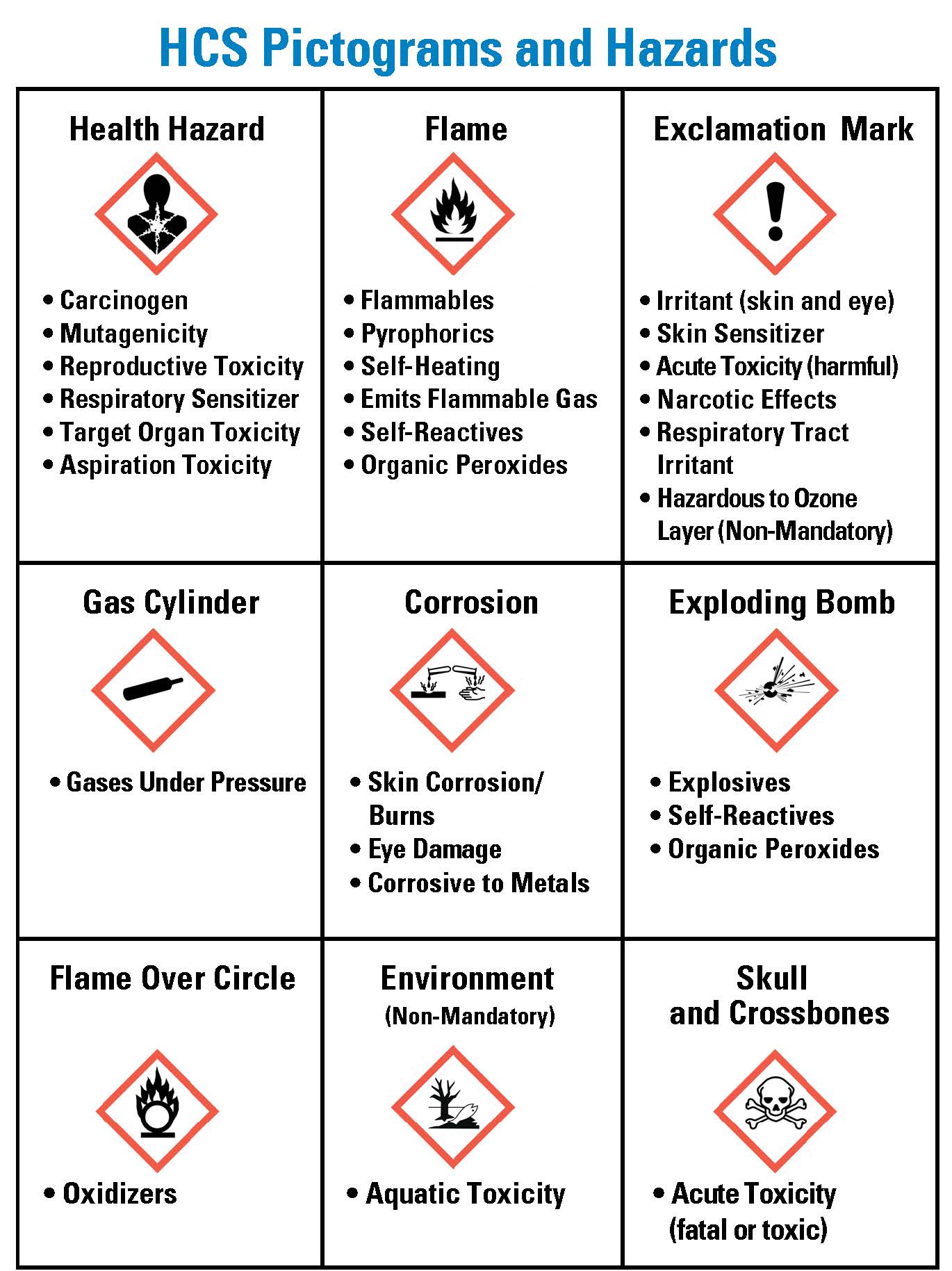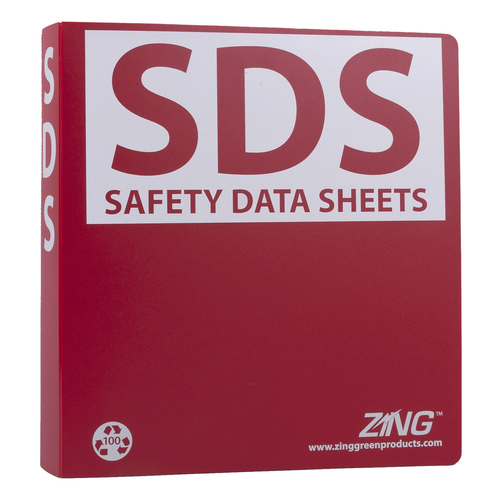A Visual Guide to HazCom Pictograms, Chemical Labels, and SDS
Nov 15th 2016
OSHA’ s Hazard Communication (HazCom) standard, effective June 1 2016, requires workers to fully understand the risks posed by workplace chemicals. The new HazCom standard is integrated with the Globally Harmonized System (GHS), which provides a universal chemical classification system. Under the new standard, a detailed, standardized label must be created for each and every chemical extant in a given workplace. The labels must communicate what hazards are posed by the chemical, as well as its uses and other relevant information. This primer guide will provide an overview of the new standard, visual examples, and an in-depth discussion of chemical labels.
PICTOGRAMS
HazCom labels are required to have pictograms. Pictograms are standardized images which indicate what type of hazard a given chemical poses. There are 9 standardized pictograms, each representing a different hazard. Each pictogram features a black graphic on a white background, with a red border. Hazardous chemical labels may require more than one pictogram.
Here is a visual guide to HazCom pictograms from OSHA:

ANATOMY OF A GHS CHEMICAL LABEL
There are 7 distinct components of a chemical label. The label must show:
- 1. The chemical name
- 2. The name of the supplier
- 3. Precautionary statements
This section will instruct workers how to handle and use the chemical safely. This section will explain what types of gloves, masks, or other protective gear must be used when handling the chemical, as well as any other crucial precautionary measures.
- 4. Hazard pictograms
- 5. Signal words: warning or danger
There are two types of signal words in HazCom labels: WARNING and DANGER. Danger indicates a more severe hazard.
- 6. Hazard Statements
This indicates precisely the type of hazard posed by a given chemical. You can think of this section as a written analogue to the pictograms. Hazards can be divided into 3 major groups: Health hazards, physical hazards, and environmental hazards. Each hazard has a code and a brief written explanation of the danger. The code consists of the letter H followed by three digits. For example, H221 refers to the hazard “Flammable gas.”
- 7. Supplemental Information
This section often contains the weight, expiration date, and directions for use. Any other hazards not elsewhere listed on the label must be included in this section.
This graphic from OSHA shows the layout of a chemical label:

WHAT ARE SAFETY DATA SHEETS (SDS)?
Safety Data Sheets provide crucial information about each chemical, including the identity and properties, potential health hazards, necessary protective measures, and instructions regarding storing, handling, or transportation.
Safety Data Sheets are required for every hazardous chemical present in a given workplace. The new HazCom standard requires that SDS are presented in a standardized 16 section format. This makes it easier to find crucial information more quickly. This OSHA quick card lists and explains the 16 sections of a Safety Data Sheet:

TRAINING
Training is a crucial part of a good HazCom program. OSHA requires that HazCom training be comprehensible and effective. Training may occur in the form of lectures, audio-visuals, videos, or classroom instruction. The best way to train can vary from one workplace to another. It is a good idea to incorporate hands-on, supervised training, so that employees have concrete examples with which to work. Workers should also be strongly encouraged to ask any questions they might have.
Training is required by OSHA on a yearly basis, and whenever a new hazard is introduced into a workplace. It should be noted that a new chemical is not necessarily a new hazard. For example, if a new corrosive is introduced into a workplace already containing corrosives, it does not constitute a new hazard. For a more in-depth discussion of HazCom training, click here.

